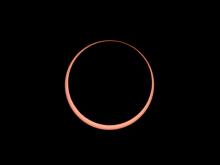Listen to today's episode of StarDate on the web the same day it airs in high-quality streaming audio without any extra ads or announcements. Choose a $8 one-month pass, or listen every day for a year for just $30.
You are here
Evening Sights
There’s a lot to look at in the early evening sky tonight, including the Moon and three planets. To see everything at once, though, you need to look at just the right time — about an hour and a half to two hours after sunset.
The crescent Moon is low in the west then, with the night sky’s second-brightest object close to the lower right: Venus, the brilliant “evening star.”
If you let your gaze arc up across the south, you’ll come to Jupiter, the solar system’s largest planet. It outshines everything except the Moon and Venus, so it’s an easy target.
If you look closely, you’ll see that it has a bright companion right now: Zubenelgenubi. The star is one of the leading lights of Libra, the balance scales. But its name means “the southern claw.” That indicates that the star once belonged to the adjoining constellation Scorpius.
Then allow your gaze to drop to the southeastern horizon for the third planet, Saturn. It’s quite bright, but it’s also quite low in the sky, so any buildings or trees along the horizon can block it from view. It will climb all the way across the southern sky during the night.
By the wee hours of the morning, Venus and the Moon will be gone from view. But Jupiter and Saturn will still be around. And yet another planet will have joined them by then — Mars. It shines bright orange as it heads toward its best showing of the year in just a few weeks, completing a beautiful line-up of planets in the June sky.





